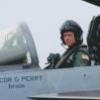What'a a good GAMI spread
-
Members Online
- SkyBound
- Red Leader
- Danb
- Fly Boomer
- Niko182
- Guy123
- cferr59
- Jbguns24
- Jim Peace
- hammdo
- MattD89
- cmorris
- acekng1
- skykrawler
- Echo
- midlifeflyer
- ElderWhitehead1
- Skates97
- RoundTwo
- Shadrach
- mhrivnak
- Joseph Long
- 201er
- Grumpy
- Bunti
- bhtitle
- wingslevel
- EKoS
- PT20J
- Jim F
- Schllc
- peterl
- Tom F
- TCC
- n13951pm
- rickseeman
- MikeOH
- affricate
- ArtVandelay
- Glen Davis
- RGDantas
- OR75
- Gary Bymers
- rturbett


Recommended Posts
Join the conversation
You can post now and register later. If you have an account, sign in now to post with your account.